“Em ơi!” called out the vendor when she caught my eyes examining her basket full of fresh baguettes. We exchanged glances, promptly followed by customary bargaining and transaction. She then swiftly disappeared to find her next customer. At sunrise, street vendors and shoppers in Hanoi's Old Quarter begin signaling the start of a new day: red and blue plastic stools are laid out on the sidewalk to receive noodle soup seekers; megaphone-equipped metal carts make sure contained footwear does not go unnoticed; makeshift motorcycle-wash is quickly set up in the lane way marking its territory on dampened asphalt. Some mobile vendors nimbly move about on foot or by bicycle to deliver goods to their regulars, while others search for eyes lingering on their baskets of vegetables, fruits, snacks and flowers.
From each end of a bamboo pole pivoted on the vendor's shoulder hang two baskets that delicately balance each other, forming an iconic image of Vietnam's mobile street vendors. 'Fixed' vendors on the other hand, often with fast-food push carts, operate from sidewalks and lane ways serving patrons daily from the same spot. It is not unusual for ground-level eating houses to spill out onto the sidewalk with their mobile cooking facilities (cylindrical briquettes), food carts and plastic tables and stools, compensating for insufficient indoor space. I picked my favourite blue plastic stool facing St. Joseph's Cathedral and sat for a while sipping Vietnamese iced tea under a striped awning. Later in the afternoon, an old lady with a baby in her arms would walk in as usual – the baby was passed around and entertained, until the lady decided she had enough chat for the day and took off. Some restaurants are more permanently equipped with a fixed kitchen, generously sized tables and comfortable chairs with backs, but curiously remain almost empty. Despite the fumes and noise from motorcycles zipping by, the locals' preferred eating and drinking spots are still the sidewalk where food is cheap, space is flexible and people-watching is easy. The mask-wearing locals are certainly concerned about their polluted environment; however, coupled with inadequate public transport, Vietnam's high motorcycle ownership in fact affords mobility and vibrant street life all over the city.
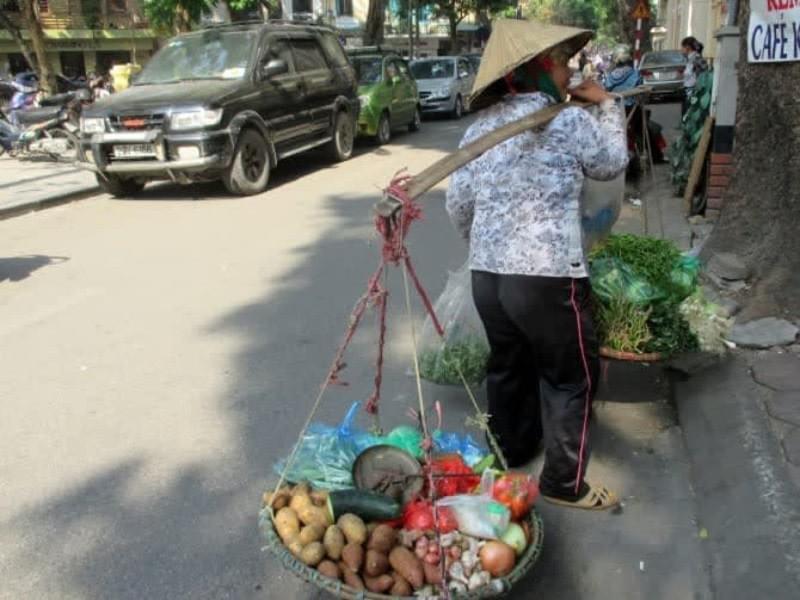
A woman delivers vegetables to eating houses early in the morning.
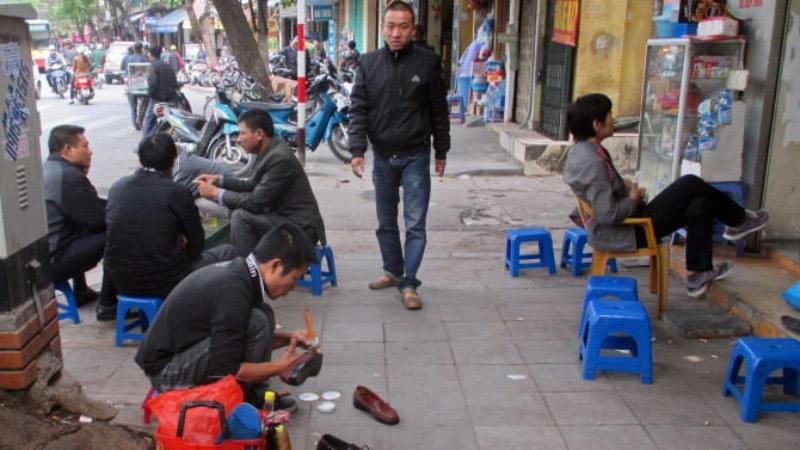
Sidewalks are promptly filled with informal workers providing services from shoe shine to motorcycle repair.
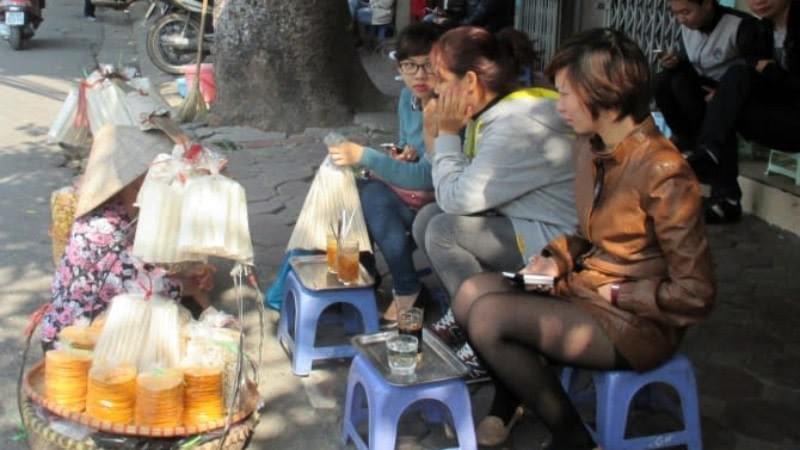
A mobile vendor comes around to sells snacks.
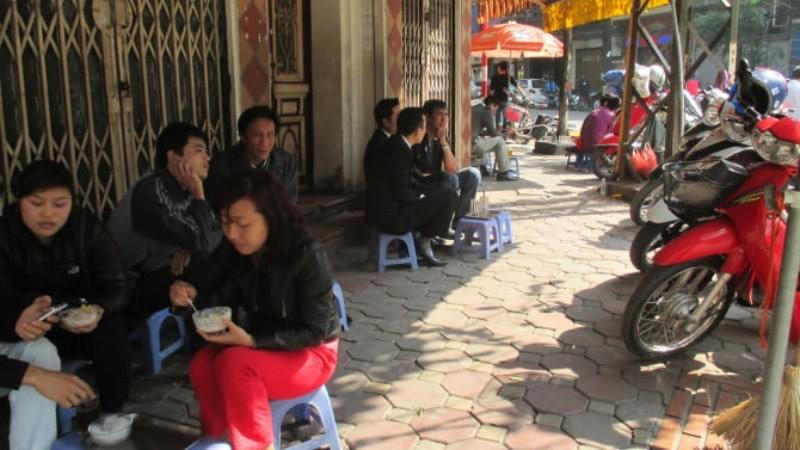
Eating houses provide plastic stools for eating and drinking on the sidewalk.
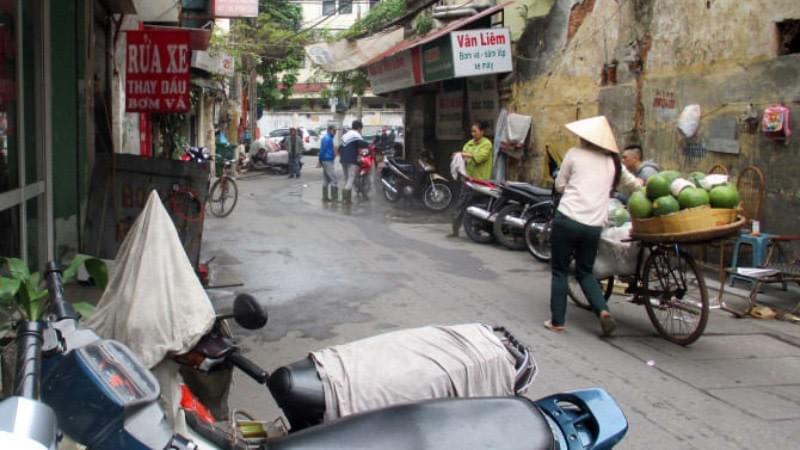
A motorcycle-wash is set up on a quiet street.
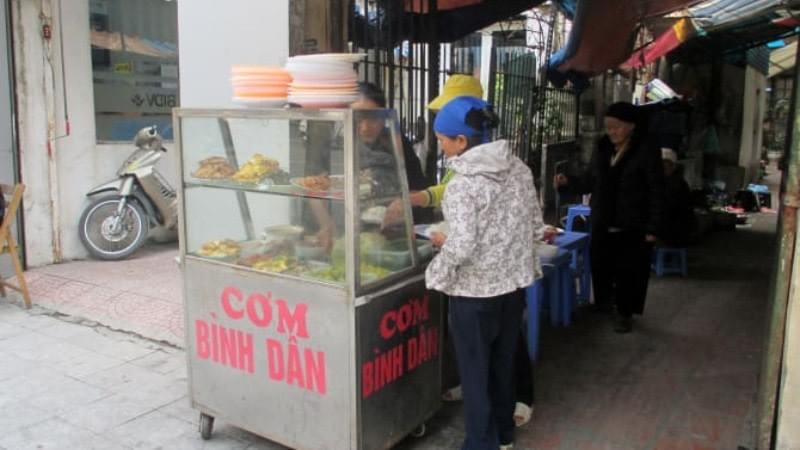
'Fixed' vendors set up outdoor seating in the lane way. Lane ways are a typical feature of a tube house, and provide 1-2m wide access to rear courtyards and houses.
Ground level activities in Hanoi's Old Quarter are largely associated with its trading tradition. The city centre's urban fabric is predominantly shaped by 'tube houses'. The deep and narrow plot size is dictated by centuries-old tax law: the wider the street frontage, the more the property tax. The regulation has led to an urban fabric of 3-4 story mixed use apartments bordering the streets (some growing taller, despite recent height regulation enforcement), with wide open ground level shops, offices and eating houses. Living spaces on upper floors are connected by internal stairs, accommodating 2-3 generations of families. Even when the ground level is not used for a family business or rented out, its façade still opens wide onto the street, fitted with glass sliding doors and metal gates. It is used for motorbike parking, tea drinking, TV-watching, cooking and eating, and the doors are often left unlocked and open to welcome visitors, both planned and unplanned.
There is a strong sense of community here. Robbers, as daring as they may have been to enter the house, would have a hard time leaving unseen by neighbours or street vendors. Children often eat and play outside their houses, claiming the sidewalk as an extension of their play room. At different times of the day, children, mums, teens, grandparents, travelers, workers spontaneously gather in Hanoi's small and big pockets of public spaces. As I start walking to my usual bus stop for work, I must be prepared to dodge flying shuttlecocks, weave through chatty crowds, and most importantly safeguard myself from accelerating motorcycles.
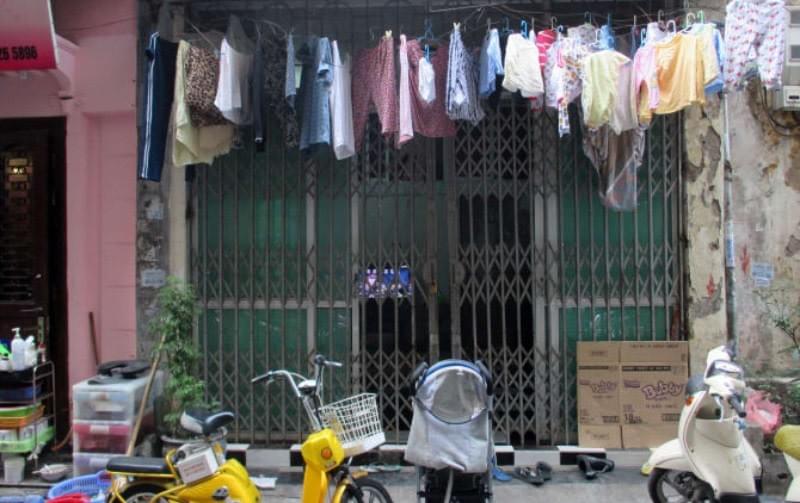
Active street frontages of tube houses keep neighbourhoods safe and engaging.
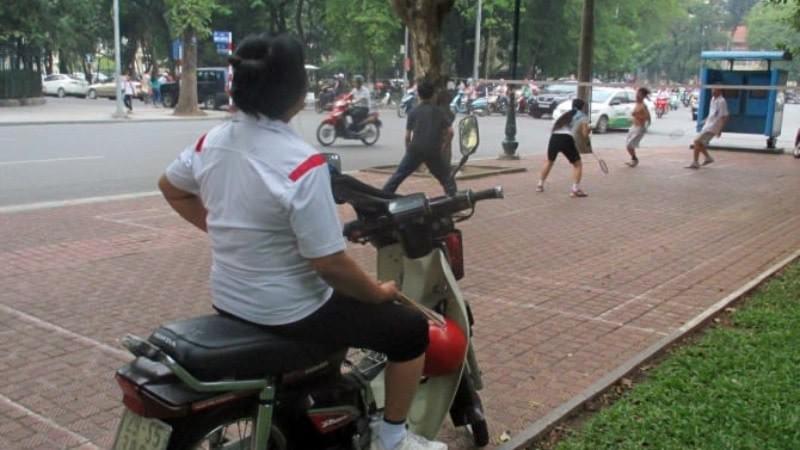
A motorcyclist pauses to watch a good game of badminton in the city centre.
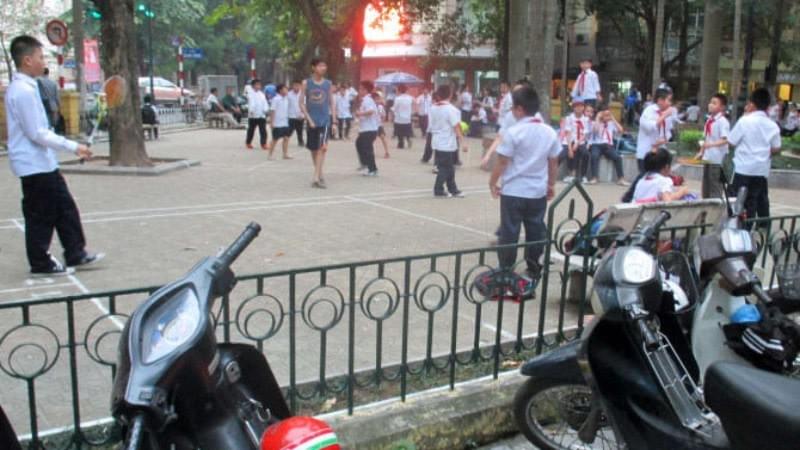
School children spill out onto the few public spaces in the city after school. Badminton is very popular amongst the young and the old.
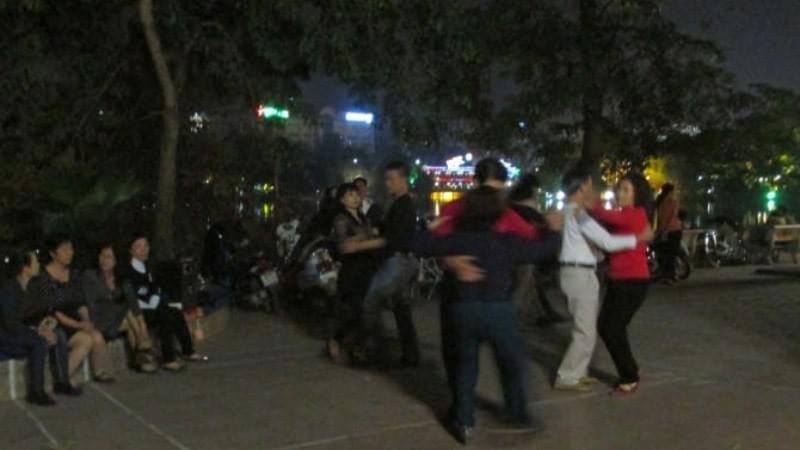
A badminton court at Hoàn Kiếm Lake transforms into a dance floor on Saturday nights.
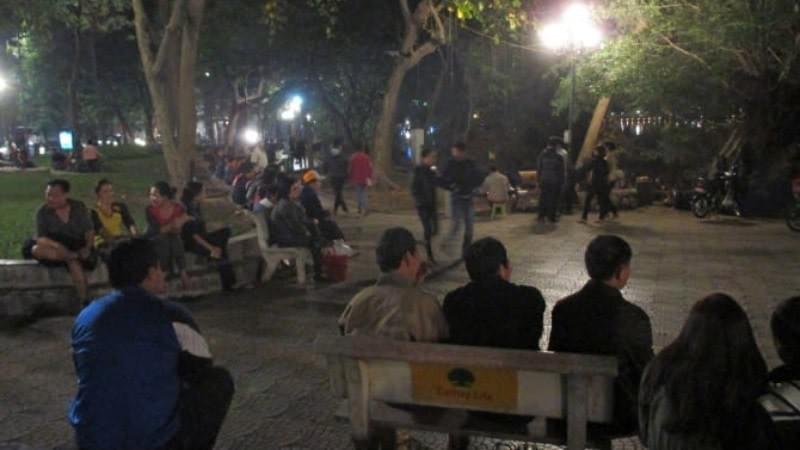
People of all ages gather at Hoàn Kiếm Lake for some Karaoke, a night stroll and a bite to eat.
Motorcyclists will drive on the sidewalk if that has a chance of saving time. A number of traffic lights are set up and several zebra crossings exist, but a typical driver will accelerate through intersections, park on the sidewalk and dismiss pedestrians. The city is occupied by an urban population of 6.5 million people with a rural mentality: individual desires are prioritised over long-term collective gain.
On the one hand, the motorcycle has empowered people to be more mobile, allowing mums to pick up their kids from school, students to get to school and traders to transport goods for sale. On the other, it has become the central dictating principle in Hanoi's urban planning. A number of provinces and districts were merged into Hanoi's metropolitan area a few years ago, tripling its land area. Many commute long distances daily using the most viable transport option: motorcycles are affordable, convenient, and fast. Cycling is unsafe and slow, while the only local public transport mode, the bus network, is disconnected, slow and overcrowded. Despite the cheap bus fare (about 25 cents per ride, regardless of distance) and reasonable frequency of buses, driving a motorcycle makes sense for most adults. “The newer the model the better of course,” my 20-something-year-old students in Hanoi said. “You look cooler if you have a cool motorcycle. A bicycle, not so much,” they added. With a new Bus Rapid Transit system and light rail underway, the city hopes to see a gradual decrease in the use of private motorised transport.
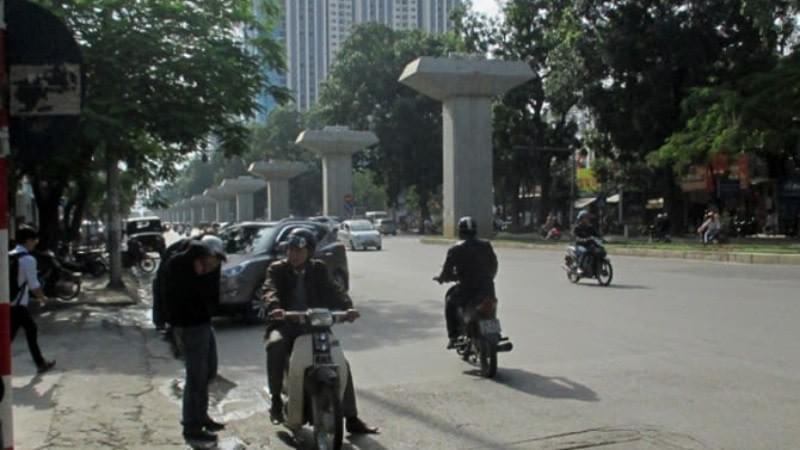
Trần Phú street is getting ready for a new elevated light rail.
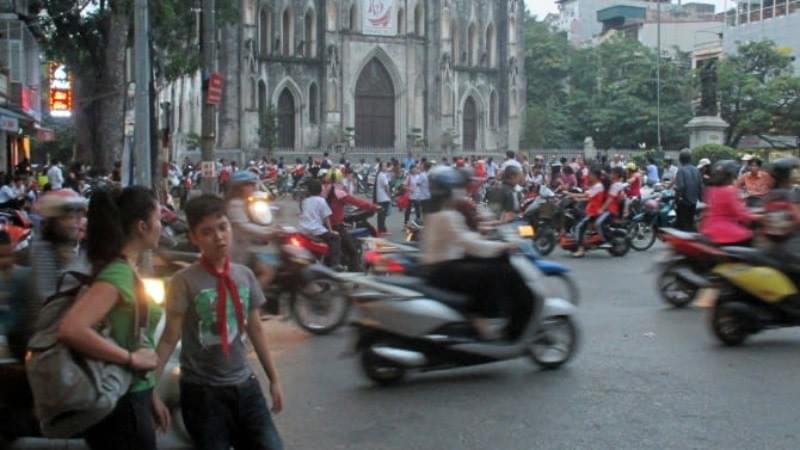
St. Joseph's Cathedral plaza mainly functions as a pick-up/drop-off area for motorcyclists and cabs.
Vietnam's leaders seem to envision a new modern Hanoi without its poorer past. While informal sector workers are being driven out from parts of the Old Quarter, ambitious plans for New Towns and large-scale developments are on the rise. Singaporean, Japanese and Korean developers are responding to Hanoi's demand for more private and exclusive neighbourhoods away from the city centre, best accessed by private cars. The new housing largely consists of quasi-European villas with backyards and parking space, and nondescript high rise apartments. Shopping is conveniently done at a nearby mall that offers everything from food to clothes. “You can safely assume the villa residents will have their own cars and maids. They may have another house in the city centre closer to work, and spend the weekend in the villa, away from the polluted, crowded city. Or sometimes, they just leave the villa vacant for years as an investment property. Either way, they want this European look,” said a local architect currently finishing a project at Vincom Village.
As the Vietnamese get richer and aspire to more spacious, car-oriented living, we will see less of the vibrant public life than that which currently keeps streets safe, active and engaging, and more of a monotonous, large and unoccupied cityscape. Perhaps today's economic downturn is a golden opportunity to reconsider what modern Hanoi should look like. I would start by acknowledging the informal sector workers as part of the economy, and applying housing principles that are in line with 1,000 years of Hanoi's vibrant history.
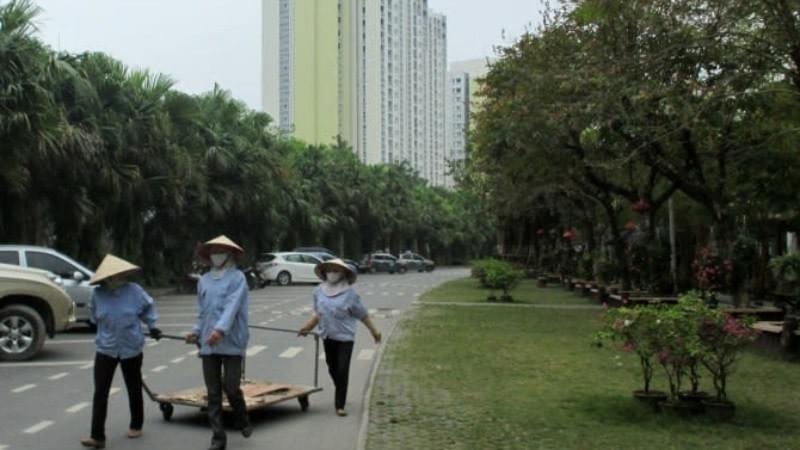
The first of 9 phases of Ecopark, a US$8.2 billion development, is now occupied. By 2020 the 500 ha of land will be complete with more gated villas, schools, hospitals, parks, gyms, shops and offices.
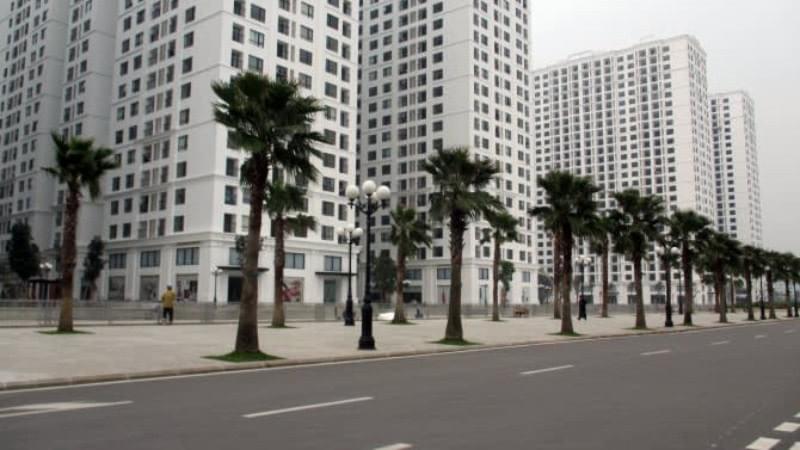
High-rises surround Vincom Mega Mall Royal City, a 230,000sqm all-in-one shopping destination over 4 levels. The second Royal City apartment complex, also in 'romantic European style' is currently under construction.
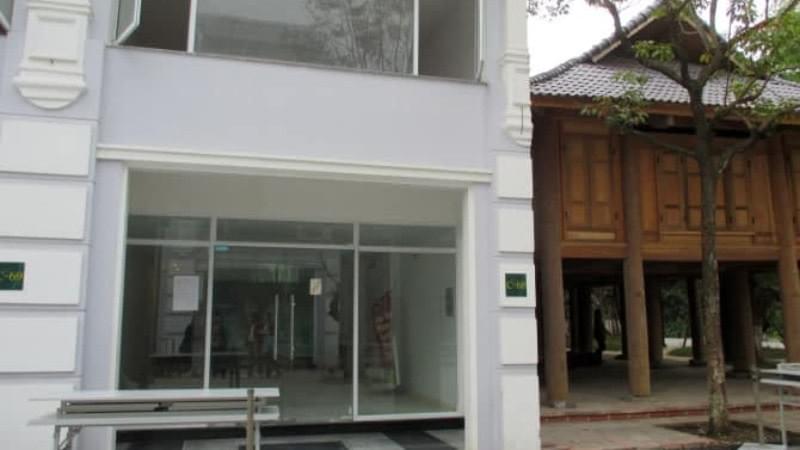
Ecopark makes a reference to traditional Vietnamese architecture: adjacent to a shophouse (left) is a communal house (right) to be shared by residents for meetings and parties.